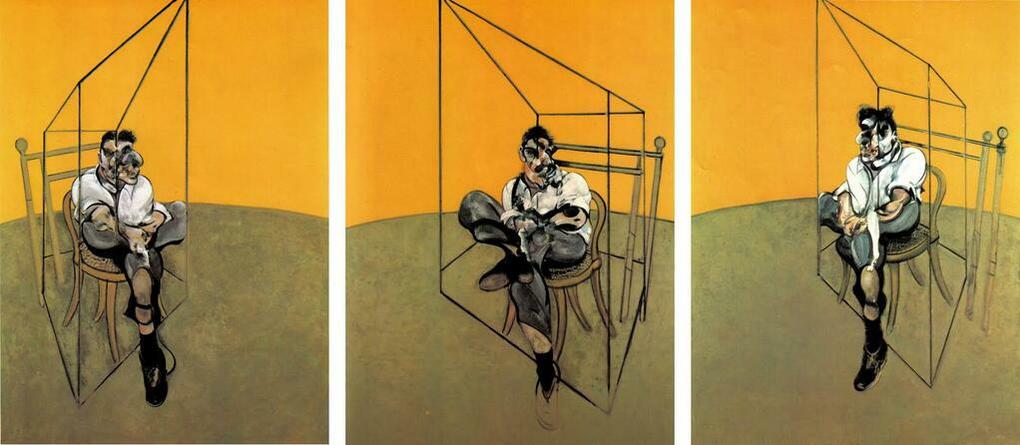Heating, solid fuel, is represented today by a group of devices. Each solid fuel boiler, available today, both domestic and foreign companies-producers - is a completely new, high-tech heaters. Thanks to the introduction in the design of heating devices of technical innovations and equipment devices automatic control, could significantly improve efficiency, optimize solid boilers.

The heating devices of this type uses the traditional principle of operation similar to the familiar for us version of stove heating. The main effect caused by the process of thermal energy generation released during the combustion of coal in a boiler furnace, coke, wood fuel and other resources with the subsequent heat transfer to the coolant.
As with other devices, providing generation, transmission power, boiler equipment has its own efficiency. Consider in more detail what the efficiency units using solid fuel. We will try to find answers to questions relating to these parameters.
What is the efficiency of heating appliances
For any of the heating unit, which is tasked with the internal space of residential heating buildings and structures for various purposes, an important component has been and remains an effective work. Parameter determining the efficiency of solid fuel boilers is the efficiency. Efficiency indicates the ratio of consumed thermal energy issued by the boiler during combustion of the solid fuel to the useful heat, which is supplied with the entire heating system.
This ratio is expressed as a percentage. The better the boiler, the higher the interest. Among modern solid fuel boilers have a model with high efficiency, high-tech, efficient and cost-effective units.
For reference: as a crude example, should assess thermal effect obtained when sitting around the fire. Released during the combustion of firewood thermal energy can heat a limited space around the fire and objects. Most of the heat from the burning fire (up to 50-60%) goes into the atmosphere, not giving any benefit, except aesthetic content, while neighboring objects and receive a limited amount of air kilocalories. the efficiency of the fire at a minimum.
efficiency of heating technology factor strongly depends on which type of fuel used and what structural features of the device.
For example: when burning coal, or wood pellets allocated different amount of heat energy. Largely depends on the efficiency of fuel combustion in the combustion chamber technology and the type of heating system. In other words, each type of heating devices (traditional boilers for solid fuel combustion units long, pellet boilers and apparatuses working due to pyrolysis) has its technological design features influencing parameters Efficiency.

It affects the efficiency of the boilers as the operating conditions and the quality of ventilation. Poor ventilation causes a shortage of air necessary for the high intensity of mass fuel combustion process. From the chimney state depends not only on the level of comfort indoors, but also the efficiency of the heating equipment, operation of the entire heating system.
Supporting documentation for the boiler must be declared by the manufacturer of equipment efficiency. Matching actual performance data stated is achieved through the proper installation of the unit, strapping and subsequent operation.
Terms boiler operating devices, the observance of which affects the magnitude of the efficiency
Any kind of heating unit has its own parameters optimal load, which should be as useful as possible, from a technological and economic point of view. The process of operation of solid fuel boilers is constructed in such a way that most of the time the technique works optimally. Ensure such work enables compliance with the rules of operation of heating equipment, solid fuel. In this case, you must adhere to and follow the following points:
- acceptable regimes must be observed and blast-drawing operation;
- constant monitoring of the intensity and completeness of combustion of fuel combustion;
- control the amount of ash and the failure;
- Assessment of heated fuel during combustion surfaces;
- Regular cleaning of the boiler.
These points are the minimum necessary, which should be observed during the operation of the boiler equipment during the heating season. Adherence to the simple and clear rules will provide the declared in the characteristics of an autonomous boiler efficiency, improve the performance of coal-fired boiler.
We can say that every detail, every element of the heating device design affects the value of efficiency. A properly designed chimney, a ventilation system for optimum air flow in the combustion chamber, which significantly affects the quality of combustion fuel product. Job ventilation is estimated excess air ratio. Excessive increase of the incoming air results in excessive fuel consumption. Intense heat escapes through the pipe together with the combustion products. When reducing the work factor boiler significantly deteriorated high likelihood of the furnace zones, bounded by oxygen. In such a situation in the furnace begins to form and accumulate large quantities of soot.

The intensity and the quality of combustion in solid fuel fired boilers require constant monitoring. Download the combustion chamber should be carried out uniformly, preventing the focal fires.
On a note: coal or wood are evenly distributed on the grate or grid. Combustion must take place over the entire surface of the layer. Evenly distributed fuel rapidly dries and burns on the surface, ensuring full burn fuel solids mass before the volatile combustion products. If you have properly laid the fuel in the furnace, the flame pi boiler operation will be bright yellow, straw color.
During combustion is important to avoid failure of the fuel resource, otherwise you'll have to face a significant mechanical losses (incomplete combustion) of fuel. If not control the position of the fuel in the furnace, the ash drawer fallen in large fragments of coal or wood may lead to unauthorized fire residues fuel mass products.
The carbon black and the resin accumulated on the surface of the heat exchanger, reduce the degree of heating of the heat exchanger. As a result of all these disorders operating conditions decreases the useful volume of the thermal energy required for normal operation of the heating system. As a consequence, we can talk about a sharp decrease in the efficiency of heating boilers.
Factors that affect the efficiency of boilers

Boilers with high efficiency to date represented by the following heating appliances:
- units operating on carbon and other solid fossil fuel;
- pellet boilers;
- devices such as pyrolysis.
Efficiency in heating devices, in which the furnace is anthracite, bituminous coal and peat briquettes, is 70-80% on average. Significantly greater efficiency in pellet devices - up to 85%. Downloadable granules, heating boilers of this type are highly efficient, issued during fuel combustion huge amount of thermal energy.
On a note: one download is enough to operate the machine at optimal conditions up to 12-14 hours.
The absolute leader in solid-fuel heating equipment - Jetstream furnace. These instruments used wood or wood waste. Efficiency of such technology today is 85% or more. The units also are highly durable combustion devices, but under the desired conditions - fuel moisture content should not exceed 20%.
An important for the value of the efficiency is the type of material from which the heater is manufactured. Today, the market presents a model of solid fuel boilers made of steel and cast iron.
For reference: The former include steel products. To reduce the market value of the unit of the company - manufacturers use the basic elements of design, made of steel. For example, the heat exchanger is made of high heat-resistant black steel 5.2 mm thick. Likewise manufactured tubular heating elements used for heating the primary circuit.
The thicker the steel used in the construction, the higher the heat transfer characteristics of the equipment. Accordingly, increasing efficiency.

In the apparatus of the steel increase in efficiency is achieved by installing special internal baffles in the form of tubes - stages main stream smoke and spargers. Measures forced and partial allowing significantly increase the effectiveness of the main unit. Among the models of steel solid fuel boilers is rare to find devices with efficiency above 75%. The operating life of such products is 10-15 years.
Foreign companies in order to increase the efficiency of steel boilers used in the models of the lower combustion process, with 2 or with 3 traction streams. The product design capacity for tubular heating elements to improve heat exchange. This technique has an efficiency in the range 75-80%, and can serve longer by 1.5 times.
Unlike aggregates of steel, cast iron have a higher efficiency solid devices.

The design iron aggregates used heat exchangers manufactured from a special grade of cast iron alloy having a high emissivity. Such boilers are most often used for open heating heating systems. Products additionally equipped with grate, through which the selection is carried out intense heat from the burning fuel directly placed on the grate.
Efficiency of such heaters is 80%. It should take into account the huge time periods of operation of cast iron boilers. term performance in such equipment is 30-40 years.
How to increase the efficiency of heating equipment, solid fuel
Today, many consumers, having at its disposal a solid fuel boiler, trying to find the most convenient and practical way how to increase the efficiency of heating equipment. Technological parameters of heating appliances, incorporated manufacturer, over time, lose their nominal values, so sought various ways to improve the efficiency of the boiler equipment and facilities.
Consider one of the most effective options to install an additional heat exchanger. The task enters a new production of heat removal from the combustion of volatile products.
In the video you can see how to make yourself an economizer (heat exchanger)
To do this we first need to know what the smoke temperature at the outlet. Change can be checked with a multimeter, which is placed directly in the middle of the chimney. The data about how much additional heat can be obtained from volatile combustion products are necessary for calculating the additional area of the heat exchanger. Do the following:
- We are sending into the furnace a certain amount of firewood;
- timed for how long a certain amount of wood burned.
For example: wood, in an amount of 14.2 kg. burn 3.5 hours. The temperature of the smoke at exit from the boiler 460 0 FROM.
1 hour we burned: 14.2 / 3.5 = 4.05 kg. firewood.
To calculate the amount of smoke using generally accepted meaning - 1 kg. = 5.7 kg wood. flue gas. Next, multiply the number of burnt in one hour on the amount of wood smoke obtained by combustion of 1 kg. firewood. In summary: 4,05 x 5,7 = 23,08 kg. volatile combustion products. This figure and will be the starting point for subsequent calculations of amount of thermal energy that can be used for further heating of the second heat exchanger.
Knowing the value of the specific heat of the hot volatile gases as 1.1 kJ / kg., Making the subsequent calculation of the heat capacity flux, if we want to reduce the fume temperature to 460 0C to 160 degrees.
Q = 23,08 x 1.1 (460-160) = 8124 kJ of heat.
As a result, we obtain the current value of the additional power that provide volatile combustion products: q = 8124/3600 = 2.25 kW, a large number that can have a significant impact on improving the efficiency of heating equipment. Knowing how much energy is wasted, the desire to equip the boiler additional heat exchanger is justified. Due to the inflow of additional thermal energy for heating of the coolant increases not only the efficiency of the entire heating system, but also the efficiency of the heater increases.
findings
Despite the abundance of models of modern heating equipment, solid fuel boilers continue to be one of the most effective and accessible view of the heating equipment. Compared with electric boilers which have an efficiency of up to 90%, solid fuel assemblies have a high economic benefit. The increase in efficiency on the new models, has allowed this type of boiler equipment came close to electric and gas boilers.
Modern devices for solid fuels are not only able to work for a long time using affordable natural fuel resources, but also have high performance characteristics.



